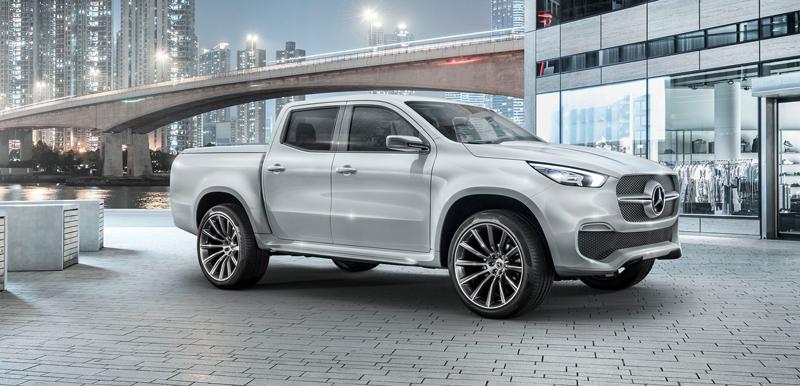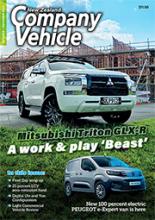Utes are big news these days. And they’re going to get bigger. Not just here either. Editor Ross MacKay explains why.
Time was when a ‘ute’ was a simple, practical ‘light commercial’ two-wheel-drive bought by farmers, tradesmen and the odd city type.
Most – in our neck of the woods anyway – were proudly made-in-Australian and built to a budget. These were the days of (vinyl) bench seats, ‘three-on-the-tree’ column gear levers and quarter windows.
Holden’s HQ and later, Ford’s XD and XE models were arguably pick of the bunch, and they literally sold in their thousands.
With the benefit of hindsight you’d have to ask yourself why? The cabin, for a start, was cramped, and could really only fit you and a mate. With standard road tyres and no limited slip diff, they weren’t much chop for getting beyond the home paddock either.
The trays were generally long and low, making loading easy and that was the main thing. You used the tractor for feeding out in the winter and the family car (often a six-cylinder Ford or Holden as well) to cart the family around.
Or you added a canopy to keep your tools and sundries safe and dry if you were a builder or plumber and preferred a traditional car driving position over the forward control perch of a van.
These were the days when Aussie-built sixes (Holden Kingswoods then Commodores, Ford Falcons and various Chryslers and later Mitsubishis) ruled the registration roost. Though things were changing.
Slowly but surely Japanese giant Toyota went from bit player to major market presence – on both sides of the Tasman. And, as buyer tastes both broadened and became more refined, what were once niche models, like the Corolla and Hilux started hitting their straps.
The dismantling of New Zealand’s subsidised car assembly (from Completely Knocked Down or CKD packs) helped, freeing car companies from the tyranny of one-size-fits-all thinking.
The arrival of the ‘double-cab’ was another game-changer.
Initially – and still in some quarters – dubbed ‘crew-cabs’, these were built on the same ladders as single cab utes, but sacrificed ultimate tray length for a second set of doors and row of seats.
At the time, motoring writers (myself included) didn’t really know what to make of them, bar they were handy to cart dirt bikes around in (if you left the rear tray door down). And, because when you stopped for a feed (and drink!) on the way home from an event you could lock your gear bag and helmet inside rather than leaving it vulnerable to light fingered locals in the open tray!
The first crew cabs were low-slung two-wheel-drive affairs aimed at contractors who need to carry staff around. Tray size was secondary to this requirement, as was the need for four-wheel-drive.
Until, that was, the advent of cost-effective on-demand (in other words not full-time) four-wheel-drive systems. It was in these, and the extra ride height that came with them, that the seeds of the current range of ‘do-anything/go-anywhere,’ ‘all-things-to-all-people’ models were sewn.
And it is these models, unlikely as it might have seemed even five or six years ago, which currently dominate new model registration stats both here and across the Tasman.
Dominate is a strong word but the numbers don’t lie. Last year (2016) the biggest selling new ‘car’ in New Zealand was actually a ute – Ford’s Ranger. Across all the many and varied (single, cab-plus and double cab) models 8478 were registered for a 6% share of the market.
Toyota’s Corolla was second (by volume with 6274 registrations for a 4%share, but the Hilux ute was not far behind (6187 regos and 4% as well) in third, with Holden’s Colorado fourth (3739 and 3%) and Mitsubishi’s Triton sixth (3183 for 2%).
That’s right, that’s four utes in the top six, against one conventional ‘car’ (the Corolla) and one SUV (Toyota’s RAV4).
The Ranger was also the biggest selling single model in 2015 and has been NZ4WD magazine’s undisputed Ute of the Year and 4WD of the Year for the past three years. And if earlier indications this year are anything to go by it will remain the ute to beat for the forseeable future.
Registration figures for the first quarter show Ranger retaining its six percent market share with 2214 sales. This time Hilux is in second place with 1719 sales for a four percent share, slotting Corolla back to third (1335/3%) just ahead of Holden Colorado (1089/3%).
That’s just the volume end of the market as well. Regularly knocking on the door of the top six by volume sellers is Nissan, with its Navara, Mazda it’s BT-50, and Isuzu with its D-Max. Add Volkswagen with its Amarok, Foton its Tunland, Great Wall, SsangYong, LDV and Mahindra and you have real critical mass.
Something which hasn’t gone unnoticed in the boardrooms of other major manufacturers. Fiat is already selling a rebadged Mitsubishi Triton in the UK, while Renault will have a Nissan Navara-based turbo-diesel double cab (named the Alaskan) on sale here, if not by the end of this year, at least early in 2018.
After teasing us with a limited edition model put together by a factory-approved aftermarket outfit Jeep is also close to releasing a factory Wrangler ute.
Talk has Hyundai producing a ute at some stage as well. The really big story here, however, is the imminent arrival of Mercedes Benz with not one but two X-class utes based – like Renault’s Alaskan – on Nissan Navara underpinnings on sale in key markets (read here, Australia, Brazil, Argentina and territories in Europe) next year.
At the official launch of its new X line at the Geneva Motor Show in March the head of the company’s van division, Volker Mornhinweg, was particularly bullish, about the sector, and the two Nissan-based utes his company is about to launch into it.
“We will open up and change the segment of mid-size pickups – with the world’s first true premium pickup for the modern urban lifestyle. Our future X-Class will be a pickup that knows no compromise.”
According to statistics used in its presentation to journalists at the Geneva Motor Show Mercedes-Benz says that at 14.1% ute ‘cut-through’ as a percentage of total new vehicle sales is greatest in Australia. Argentina is second with 11.6%, Brazil third at five percent. New Zealand, by the way, is right up there with Australia and Argentina, the 2016 figure for 4WD utes here, 12%.
When you look at key European markets, you can understand the optimism the company has. Mid-size utes account for just 1.3 percent of total sales in the UK, 0.8% in Russia and just 0.5% in Germany.



